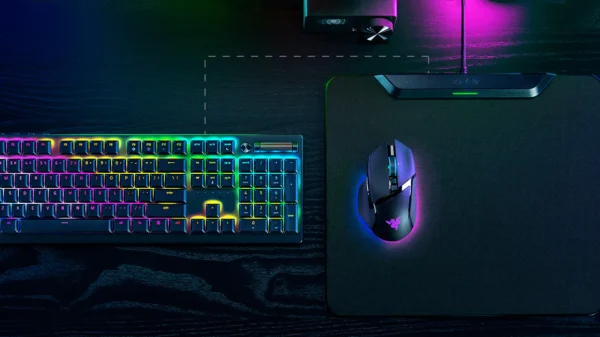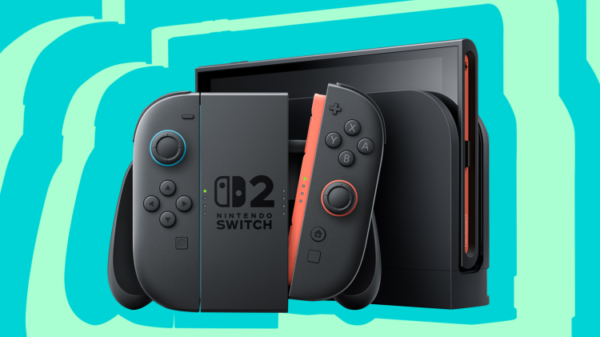Overview
It might be difficult to choose the ideal laptop for students, especially if you’re on a tight budget—less than $500. It’s critical to choose a laptop that strikes a mix between performance, portability, battery life, and cost given the abundance of options on the market. We’ll go over the top 15 laptops under $500 for students in our extensive guide, so you can choose wisely without going over budget.
Things to Take Into Account While Selecting a Student Laptop
In order to choose a student laptop that fits your demands in terms of academics, personal use, and finances, you must take into account a number of variables. Here is a thorough breakdown of the ten important things to think about:
1. Budget
Why It Matters: The cost of laptops varies greatly. Establishing a budget guarantees that you don’t overspend and helps you focus your selections.
Thoughts;
– Entry-Level (up to $500): Simple models appropriate for web browsing, word processing, and other simple tasks.
– Mid-Range ($500–$1000): Higher performance, appropriate for demanding apps and multitasking.
– High-End ($1000 and above): Excellent performance, perfect for jobs requiring a lot of resources, such as gaming or video editing.
2. Portability
Why It Matters: Portability is important since students frequently need to take computers around campus.
Thoughts;
– Weight: For portability, try to get a laptop that weighs less than 4 pounds.
– Size: 13–14 inches is frequently a reasonable compromise between portability and screen real estate.
3. Battery Life
Why It Matters: You may work through an entire day of courses and study sessions with a laptop that has a long battery life, meaning you won’t need to charge it regularly.
Thoughts:
– Minimum 8 hours: Search for laptops with battery life claims of at least 8 hours.
– Usage Pattern: Take into account how you use the battery; heavier uses deplete it more quickly.
4. Performance
Why It Matters: Makes sure that all of your academic tasks—like using software and multitasking—run smoothly.
Thoughts;
Processor (CPU): i5/Ryzen 5 or higher for everyday use; i7/Ryzen 7 for heavy-duty applications.
RAM: 16GB is recommended if you run demanding apps; 8GB is the typical amount.
– Storage: SSDs outperform conventional HDDs in terms of speed and dependability. Get an SSD with at least 256GB.
5. Operating System
Why It Matters: The OS controls the user interface, general user experience, and software compatibility.
Thoughts;
– Windows: Adaptable, compatible with a wide range of software, ideal for both general and specialist applications.
Creative professionals like macOS because it works nicely with other Apple products.
– Chrome OS: Suitable for web-based tasks and applications, lightweight, and secure.
6. Screen Quality
Why It Matters: An excellent screen can improve visual clarity and lessen eye strain when studying, streaming, and other activities.
Thoughts;
– Resolution: For optimal clarity, Full HD (1920×1080) is advised.
– Display Technology: Viewing angles and color reproduction are superior with IPS panels over TN panels.
– Brightness: A screen with 300 nits or greater of brightness is recommended for use in a range of lighting scenarios.
7. Keyboard and Trackpad
Why It Matters: Extended typing sessions and ease of use depend on a comfortable and responsive keyboard and trackpad.
Thoughts;
-Keyboard: Make that the key travel and spacing are adequate.
– Backlit Keyboard: Practical for typing in dimly lighted areas.
– Trackpad: Verify that it is multi-touch capable and responsive.
8. Durability
Why It Matters: Laptops are frequently carried by students in backpacks and used in a variety of settings. A sturdy laptop is resistant to drops and bumps.
Thoughts;
– Build Quality: Search for laptops that are well-built and made of premium materials.
– Rugged characteristics: Spill-resistant keyboards are among the extra-durable characteristics that certain laptops are built with.
9. Options for Connectivity
Why It Matters: To connect to a variety of devices and networks, there must be enough ports and connectivity possibilities.
Thoughts;
– Ports: Make sure the laptop has sufficient HDMI connectors for external monitors, adequate USB ports, and maybe an SD card reader.
– Wireless Connectivity: For improved connectivity, look for Bluetooth and the most recent Wi-Fi standards (Wi-Fi 6).
10. Service and Guarantee
Why It Matters: If your laptop has problems in the future, having strong support and a trustworthy guarantee might spare you trouble.
Thoughts;
– Warranty: Seek for a warranty that is at least one year long, preferably extendable.
– Customer Support: Look up reviews to see how well the firm provides customer service.
– Repair Services: Take into account whether nearby repair services are available.
You can select a laptop that will support you well over your academic career by carefully weighing these factors, which should balance performance, affordability, and longevity.
The Best 15 Laptops Under $500 for Students
1. The Acer Aspire 5

Image credit: Acer store
Features
With a 15.6-inch Full HD display, an Intel Core i3 processor, 4GB of RAM, and a 128GB SSD, the Acer Aspire 5 is a well-rounded laptop. Additionally, it has an illuminated keyboard, which is great for studying late at night.
Benefits and Drawbacks
Benefits:
– Reasonably priced with good performance
– Full HD screen for crisp images
– Backlit keyboard
Drawbacks
– Limited capacity for storing; – Moderate battery life
2. The IdeaPad 3 Lenovo

Image credit: Lenovo
Features
The AMD Ryzen 3 engine, 256GB SSD, 8GB RAM, and 14-inch HD display are all included in the Lenovo IdeaPad 3. This laptop has quick storage and outstanding multitasking capability.
Benefits and Drawbacks
Benefits:
– Excellent performance for the cost – Plenty of RAM and storage
– Small and lightweight construction
Drawbacks:
– The HD display lacks Full HD quality.
– Quality of plastic construction
3. The HP Chromebook x360

Image credit: HP
Features
With a 14-inch touchscreen display, an Intel Pentium Silver N5000 processor, 4GB of RAM, and 64GB of eMMC storage, the HP Chromebook x360 is a multipurpose 2-in-1 device. Because ChromeOS is its operating system, it is ideal for cloud-based work.
Pros and Cons
Pros:
– Two-in-one convertible style
– A touchscreen that responds
– Compact and transportable
Cons:
– Storage space is limited;
– Not every apps may run on ChromeOS
4. The Inspiron 15 3000 from Dell

Image credit: Dell
Features
A 15.6-inch HD display, an Intel Core i3 processor, 8GB of RAM, and a 128GB SSD are included with the Dell Inspiron 15 3000. It’s a dependable option for routine chores and modest multitasking.
Pros and Cons:
Pros:
– Large display
– Good performance for daily use
– Sufficient RAM for multitasking
Cons:
– Better display resolution would be nice.
– Poor battery longevity
5. VivoBook 15 from ASUS

Image credit: ASUS
Features
A 15.6-inch Full HD display, an AMD Ryzen 3 processor, 8GB of RAM, and a 128GB SSD are all features of the ASUS VivoBook 15. It is renowned for having a strong construction and a sleek appearance.
Benefits and Drawbacks
Benefits:
– Full HD display
– Dependable build and performance
– Lightweight and elegant design
Drawbacks
– Limited capacity for storing;
– Moderate battery life
6. Surface Go 2 by Microsoft

Image credit: Microsoft
Features
The Microsoft Surface Go 2 is a small 2-in-1 tablet featuring an Intel Pentium Gold processor, 64GB eMMC storage, 4GB of RAM, and a 10.5-inch touchscreen. For students who require a portable tablet for light computing and note-taking, this is ideal.
Benefits and Drawbacks
Benefits:
– Very lightweight and portable
– Adaptable 2-in-1 design
– Exquisite visual clarity
Drawbacks
– Tiny screen
– Limited processing and storage capacity
7. The Flex 5 Lenovo Chromebook
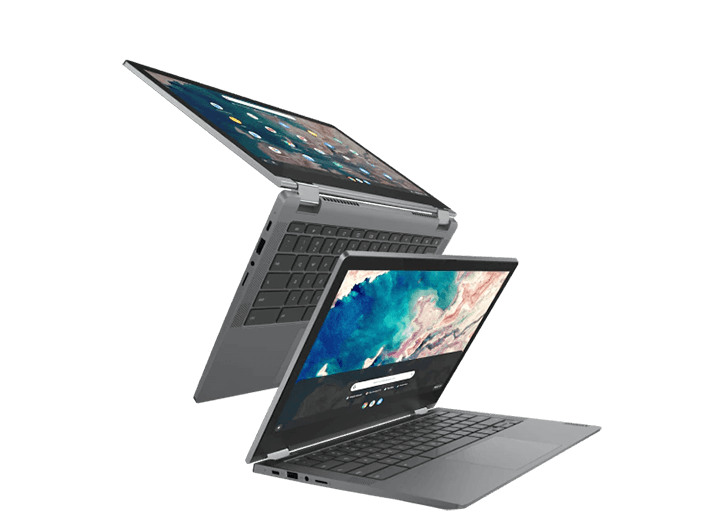
Image credit: Lenovo
Features
A 13.3-inch Full HD touchscreen, an Intel Core i3 processor, 4GB of RAM, and 64GB of eMMC storage are all features of the Lenovo Chromebook Flex 5. With its adaptable 2-in-1 architecture, it operates on ChromeOS.
Benefits and Drawbacks
Benefits:
– Adaptable and lightweight design
– Full HD touchscreen
– Strong ChromeOS performance
Drawbacks
– Storage space is limited;
– Heavy software is not appropriate
8. Laptop HP 14
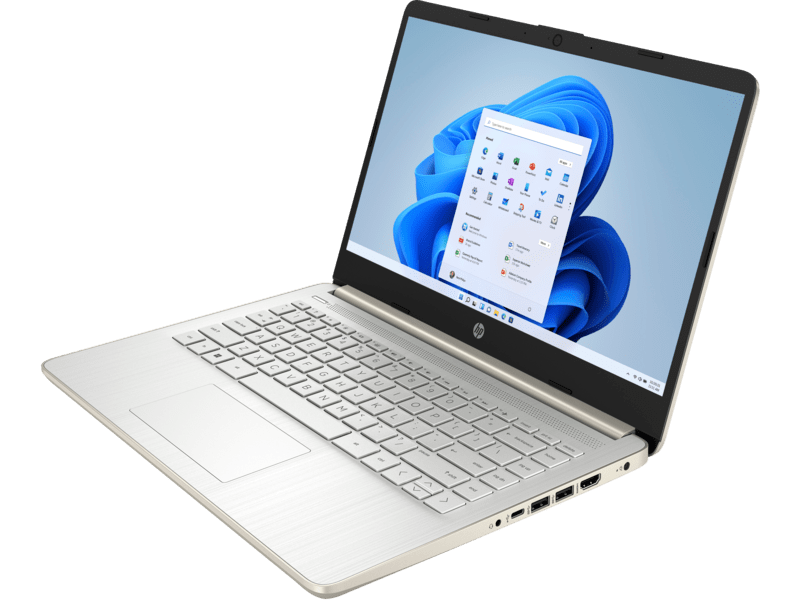
Image credit: HP
Features
The AMD Ryzen 3 processor, 256GB SSD, 8GB RAM, and 14-inch HD display are all included with the HP 14 laptop. It’s a good, reasonably priced choice for routine chores.
Benefits and Drawbacks
Benefits:
– Ryzen 3 performs well.
– Ample storage space
– Compact and transportable
Drawbacks
– High definition display resolution
– Better construction quality
9. The Chromebook 514 from Acer
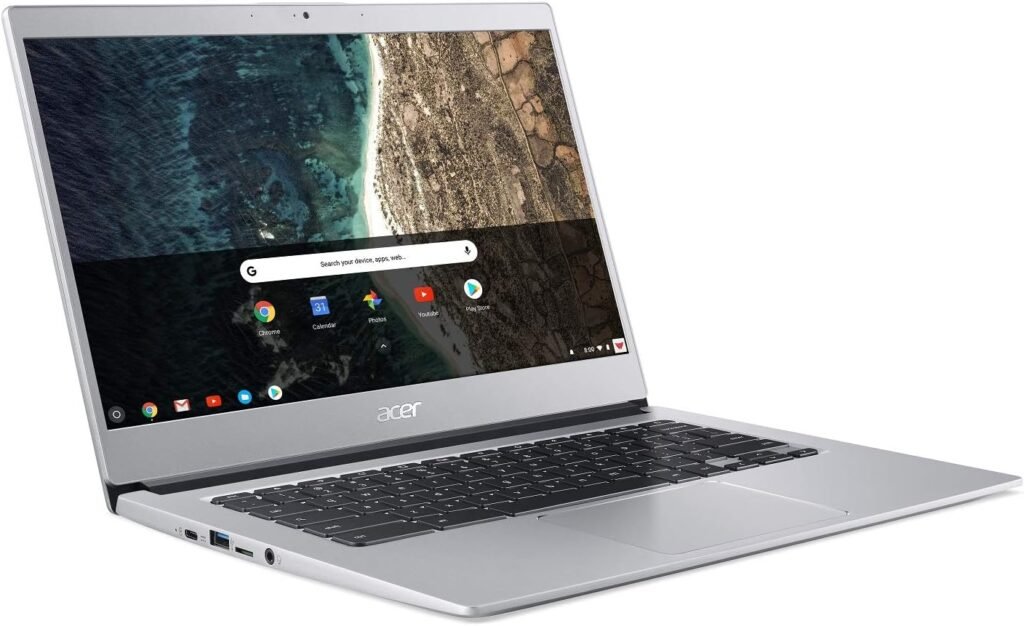
Image credit: Acer store
Features
The Intel Celeron N3350 processor, 64GB eMMC storage, 4GB of RAM, and a 14-inch Full HD touchscreen are all features of the Acer Chromebook 514. It’s a sleek, powerful Chromebook that works well for anything using the cloud.
Benefits and Drawbacks
Benefits:
– Full HD touchscreen
– Elegant appearance
– Extended battery life
Drawbacks
– Low processing speed
– Minimal storage space
10. ASUS Flip C434 Chromebook

Image credit: ASUS
Features
A 14-inch Full HD touchscreen, an Intel Core m3 processor, 4GB of RAM, and 64GB of eMMC storage are all included in the ASUS Chromebook Flip C434. Its aluminum body gives it a high-end appearance and feel.
Benefits and Drawbacks
Benefits:
– Exquisite construction quality
– Full HD touchscreen
– Adaptable style
Drawbacks
– Small storage capacity
– Slightly more expensive than a Chromebook
11. Samsung Chromebook 4

Image credit: Samsung
Features
An 11.6-inch HD display, an Intel Celeron N4000 processor, 4GB of RAM, and 32GB of eMMC storage are included with the Samsung Chromebook 4. It’s a convenient and reasonably priced choice for students.
Benefits and Drawbacks
Benefits:
– Lightweight and portable
– Reasonably priced
– Acceptable performance on routine duties
Drawbacks
– Tiny screen
– Limited RAM and storage
12. Dell Chromebook 11 3100
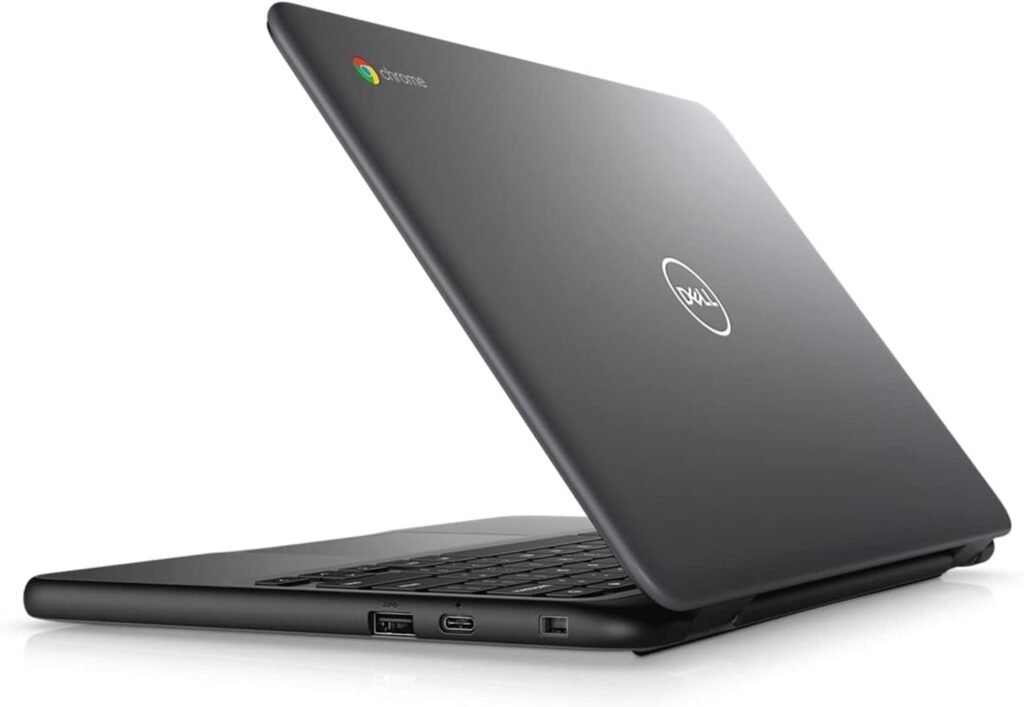
Image credit: Dell
Features
An 11.6-inch HD display, an Intel Celeron N4020 processor, 4GB of RAM, and 32GB of eMMC storage are features of the Dell Chromebook 11 3100. It is made with durability and student convenience in mind.
Benefits and Drawbacks
Benefits:
– Sturdy and robust construction
– Reasonably priced and small
– Extended battery life
Drawbacks
– Tiny screen
– Limited amount of storage
13. Lenovo S145

Image credit: Lenovo
Features
A 15.6-inch HD display, an Intel Pentium Gold processor, 4GB of RAM, and a 128GB SSD are all highlights of the Lenovo S145. It’s an affordable laptop that works well for daily use.
Benefits and Drawbacks
Benefits:
– Generous display
– Sufficient performance for everyday use
– Reasonably priced
Drawbacks
– HD resolution is not Full HD
– Build quality is mediocre
14. HP Stream 14

Image credit: HP
Features
A 14-inch HD display, an Intel Celeron N4000 processor, 4GB of RAM, and 64GB of eMMC storage are included with the HP Stream 14. It’s a very reasonably priced laptop that specializes in cloud computing.
Pros and Cons
Pros:
– Extremely inexpensive
– Portable and lightweight – Long battery life
Cons:
– Performance and storage are limited
– High definition visual clarity
15. Spin 1 of Acer
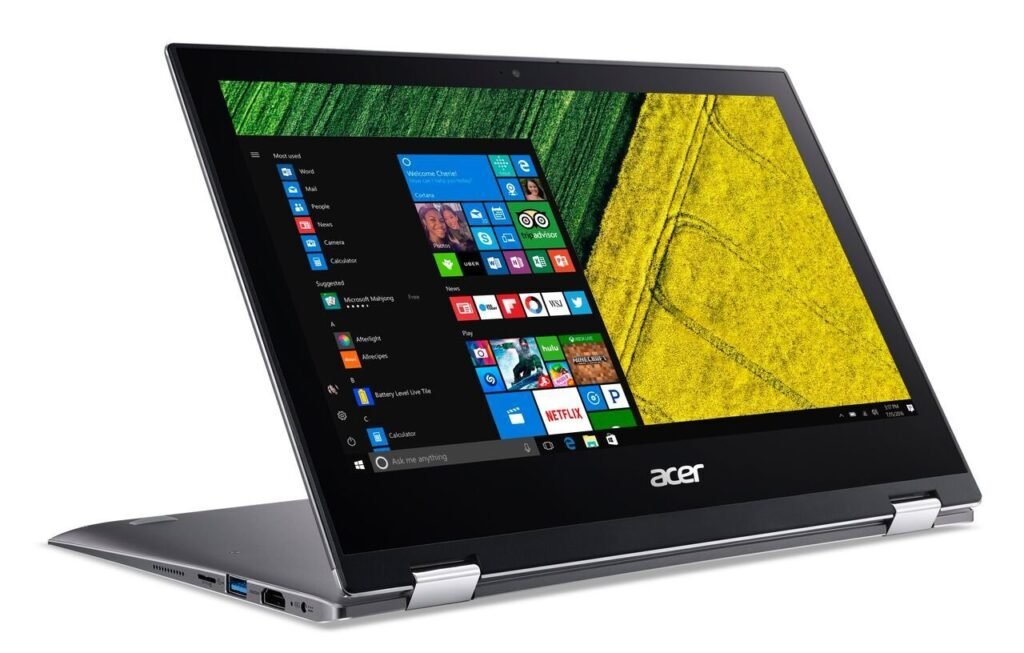
Image credit: Acer
Features
An 11.6-inch Full HD touchscreen, an Intel Celeron N4000 processor, 4GB of RAM, and 64GB of eMMC storage are among the characteristics of the Acer Spin 1. It’s a little, multipurpose laptop that can do two things at once.
Pros and Cons
Pros:
– Full HD touchscreen
– Small and lightweight
– Two-in-one convertible style
Cons:
– Performance and storage are limited
– Tiny screen size
Commonly Requested Questions
1. Are Chromebooks a wise option for students to use?
For students, especially those who predominantly utilize web-based programs, Chromebooks are a great option. They often have a straightforward, user-friendly interface, a long battery life, and are more reasonably priced. They might not, however, be able to handle any specialized software that is needed for specific courses.
2. Can I play games on these laptops?
These laptops are not meant for high-end gaming, but they are appropriate for simple computer chores and moderate multimedia consumption. While some of them could be able to handle light gaming, a higher powerful laptop would be required for more intense gaming.
3. Regarding software compatibility, how does it stand?
The majority of these laptops are ChromeOS or Windows-based. Windows laptops are generally compatible with most software programs, but ChromeOS is primarily restricted to Android and web apps. Make sure the laptop you select can run the programs you require for your coursework.
4. How significant are support and warranty?
Support and warranty are important considerations when buying a laptop. The majority of products provide a warranty that lasts at least a year, but knowing the conditions and whether customer service is offered can provide you piece of mind and help in the event that something goes wrong with your gadget.
Key Takeaways
When choosing a laptop for students under $500, it’s important to consider performance, portability, battery life, and cost. This guide’s selection of laptops offers a range of features to accommodate various requirements and tastes. Whether you value a lightweight construction, a 2-in-1 design, or lots of storage, there’s an affordable choice here that can improve your educational experience without breaking the bank.




